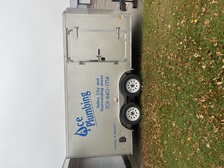
Get matched with top retaining wall installation pros in Valley City, ND
Enter your zip and get matched with up to 5 pros
Need a pro for your retaining wall installation project in Valley City, ND?
Verified Reviews for Retaining Wall Installation pros in Valley City, ND
*The Angi rating for Retaining Wall Installation companies in Valley City, ND is a rating based on verified reviews from our community of homeowners who have used these pros to meet their Retaining Wall Installation needs.
*The HomeAdvisor rating for Retaining Wall Installation companies in Valley City, ND is a rating based on verified reviews from our community of homeowners who have used these pros to meet their Retaining Wall Installation needs.
Last update on December 12, 2025
Find Retaining wall installation pros in Valley City
Top Level Builders, LLC
Top Level Builders, LLC
At Top Level Builders we are committed to delivering high-quality, reliable, and cost-effective construction solutions. With a focus on customer satisfaction and excellence, we aim to transform your vision into reality with precision, skill, and expertise.
"Did an amazing job. "
Jeff W on November 2025
At Top Level Builders we are committed to delivering high-quality, reliable, and cost-effective construction solutions. With a focus on customer satisfaction and excellence, we aim to transform your vision into reality with precision, skill, and expertise.
"Did an amazing job. "
Jeff W on November 2025

Sentri Homes
Sentri Homes
Sentri Homes is a full-service contractor delivering high-end home additions, whole-home remodels, new custom builds, luxury kitchens, structural framing, roof replacements, and every major renovation. We assign a dedicated project manager to every job, deliver meticulous craftsmanship with clear communication, and back our work with an industry-leading warranty to ensure complete peace of mind on your largest investments. Our in-house team of licensed builders and master craftsmen consistently earns 5-star reviews by turning big visions into stunning, high-value homes—when you need one trusted partner who truly does it all, we’re the proven choice.
Sentri Homes is a full-service contractor delivering high-end home additions, whole-home remodels, new custom builds, luxury kitchens, structural framing, roof replacements, and every major renovation. We assign a dedicated project manager to every job, deliver meticulous craftsmanship with clear communication, and back our work with an industry-leading warranty to ensure complete peace of mind on your largest investments. Our in-house team of licensed builders and master craftsmen consistently earns 5-star reviews by turning big visions into stunning, high-value homes—when you need one trusted partner who truly does it all, we’re the proven choice.
Uxari powered by Vitex
Uxari powered by Vitex
With Uxari, you and your home are connected, automatically. You choose what to connect (devices) and we do the connecting (wireless services plan). Plus, we do it for as little as $99 down with monthly payments as low as $34.99. At Uxari, you will talk to a real person when you have a question, 7 days a week. So go ahead, start enjoying your new life style, knowing answers to all your questions are only a call or an e-mail away. And the best part is all of our services come with a 30-day, risk-free trial. We believe in not only finding exactly the right plan for you, but making sure you’re completely satisfied with it, too.
"The Smart Home features they installed, such as thermostat and door locks, etc. do not always work. For example, the Honeywell thermostat can no longer be operated from our phones and is difficult to install. Remote door locks are also unpredictable."
William B on November 2019
With Uxari, you and your home are connected, automatically. You choose what to connect (devices) and we do the connecting (wireless services plan). Plus, we do it for as little as $99 down with monthly payments as low as $34.99. At Uxari, you will talk to a real person when you have a question, 7 days a week. So go ahead, start enjoying your new life style, knowing answers to all your questions are only a call or an e-mail away. And the best part is all of our services come with a 30-day, risk-free trial. We believe in not only finding exactly the right plan for you, but making sure you’re completely satisfied with it, too.
"The Smart Home features they installed, such as thermostat and door locks, etc. do not always work. For example, the Honeywell thermostat can no longer be operated from our phones and is difficult to install. Remote door locks are also unpredictable."
William B on November 2019

Lance Aaron/ Professional Online Portrait Artist
Lance Aaron/ Professional Online Portrait Artist
Hey, I'm Lance! I became a professional online portrait artist in 2006 after my family was taken from me in a tornado losing my mother, father, brother, and son. Twenty-eight lives were taken as well as all their possessions, like mine. I drew from destroyed photos their families so they could have memorial portraits of them at the funerals and for the rest of time. Since then I have made a living traveling the country doing shows and drawing from photos you email me on line. There is NO GIFT more unique that brings more tears of joy to a loved one's eyes like one of these. Nothing. I've seen it time and time again. I make it affordable to anyone who's ever wanted one of these. Paintings with half the detail of these can cost upwards of $30,000 limiting something like this from hanging in living rooms for families to the rich only. Not anymore. Here's how it works.. Simply email me your favorite picture or pictures to [email protected] with a brief description of what you would like done. The bigger and clearer the picture the better the drawing. I will start an initial sketch right away and take pictures of it and show it to you. Please email them quickly if possible, because the holidays are coming and I get busy. Once the initial sketch is done. I usually take something down on it. It's a lot of work doing the initial sketch. This varies on the cost of the drawing which we will discuss right away. Drawings are usually 175 for 9x12's 225 for 11x14's 275 for 14x17's After this process is done I continue with your art piece sending you photos on line all the way through which many people find a lot of fun. I am also friends on Facebook with almost every person I've ever drawn for as well and would like to be your friend as well if you would like that. I post them on FB at your discretion. It makes me way more legit to people as well. The Prices vary with the art because of the size of the drawing as well as the number of faces. The number of faces DOES NOT double the cost. Usually an extra face is added depending on the size from anywhere between 25 and 50, but I do deals on these more than anything, so please call me about it at .(850) 691-3976
Hey, I'm Lance! I became a professional online portrait artist in 2006 after my family was taken from me in a tornado losing my mother, father, brother, and son. Twenty-eight lives were taken as well as all their possessions, like mine. I drew from destroyed photos their families so they could have memorial portraits of them at the funerals and for the rest of time. Since then I have made a living traveling the country doing shows and drawing from photos you email me on line. There is NO GIFT more unique that brings more tears of joy to a loved one's eyes like one of these. Nothing. I've seen it time and time again. I make it affordable to anyone who's ever wanted one of these. Paintings with half the detail of these can cost upwards of $30,000 limiting something like this from hanging in living rooms for families to the rich only. Not anymore. Here's how it works.. Simply email me your favorite picture or pictures to [email protected] with a brief description of what you would like done. The bigger and clearer the picture the better the drawing. I will start an initial sketch right away and take pictures of it and show it to you. Please email them quickly if possible, because the holidays are coming and I get busy. Once the initial sketch is done. I usually take something down on it. It's a lot of work doing the initial sketch. This varies on the cost of the drawing which we will discuss right away. Drawings are usually 175 for 9x12's 225 for 11x14's 275 for 14x17's After this process is done I continue with your art piece sending you photos on line all the way through which many people find a lot of fun. I am also friends on Facebook with almost every person I've ever drawn for as well and would like to be your friend as well if you would like that. I post them on FB at your discretion. It makes me way more legit to people as well. The Prices vary with the art because of the size of the drawing as well as the number of faces. The number of faces DOES NOT double the cost. Usually an extra face is added depending on the size from anywhere between 25 and 50, but I do deals on these more than anything, so please call me about it at .(850) 691-3976

HelloTech: Tech Support To Your Door
HelloTech: Tech Support To Your Door
Have no fear, HelloTech is here. We can send a tech to your door to help with your computer, home theater, TV mounting, and general device needs. In many cases, we can solve your issues remotely for much less, simply by connecting to your computer.
"They have excellent service"
Heidi G on January 2022
Have no fear, HelloTech is here. We can send a tech to your door to help with your computer, home theater, TV mounting, and general device needs. In many cases, we can solve your issues remotely for much less, simply by connecting to your computer.
"They have excellent service"
Heidi G on January 2022

Seamless Pro
Seamless Pro
With over 20yrs of professional contracting experience, Seamless Pro is your one stop shop and the only name you need to know when it comes to Seamless Gutters & Siding installation. We cover everything from redoing your entire home, to the smallest of repairs. We also specialize in many different types of leaf guard, for your gutter system and speciality roof installations. Contact us today for a "FREE ESTIMATE" we look forward to serving you! *Military Personnel Receives Discounts With Us!*
"Amazing. Jesse had a crew member out the very next day to replace a broken down spout. Service was exceptional and price was beyond fair and reasonable! 10/10"
Adam T on November 2021
With over 20yrs of professional contracting experience, Seamless Pro is your one stop shop and the only name you need to know when it comes to Seamless Gutters & Siding installation. We cover everything from redoing your entire home, to the smallest of repairs. We also specialize in many different types of leaf guard, for your gutter system and speciality roof installations. Contact us today for a "FREE ESTIMATE" we look forward to serving you! *Military Personnel Receives Discounts With Us!*
"Amazing. Jesse had a crew member out the very next day to replace a broken down spout. Service was exceptional and price was beyond fair and reasonable! 10/10"
Adam T on November 2021
Chad and Lisa Davis :Davis Construction
Chad and Lisa Davis :Davis Construction
Davis Construction is a sole proprietorship. We do not do any subcontracting. Payment is due upon completion of project, in some situations a down payment may be required.
Davis Construction is a sole proprietorship. We do not do any subcontracting. Payment is due upon completion of project, in some situations a down payment may be required.

Warmzone
Warmzone
WARMZONE is a national company designs and sells radiant snow removal systems for heated driveways and walkways, radiant floor heating and roof deicing. We have a trained staff of professionals that will learn about your project requirements and perscribe the best solution possible to heat your driveway or home. We have a network of subcontractors across the United States. Our consultations and designs are free and we have one of the largest selection of proven products to choose from. Call or email us to receive a free quote.
"They were absolutely wonderful. Will sure recommend them"
jorge d on April 2018
WARMZONE is a national company designs and sells radiant snow removal systems for heated driveways and walkways, radiant floor heating and roof deicing. We have a trained staff of professionals that will learn about your project requirements and perscribe the best solution possible to heat your driveway or home. We have a network of subcontractors across the United States. Our consultations and designs are free and we have one of the largest selection of proven products to choose from. Call or email us to receive a free quote.
"They were absolutely wonderful. Will sure recommend them"
jorge d on April 2018
The Valley City, ND homeowners’ guide to retaining wall installation services
From average costs to expert advice, get all the answers you need to get your job done.

Landscape curbing can really improve the look of a yard, but at what cost? Find out how much it costs and the different ways you can do it

Leveling your yard can help with drainage and prevent damage to your home. Learn the cost to level a yard and what factors can affect the price.

Railroad tie retaining wall costs can vary widely, so getting an accurate estimate for your needs is a good idea to set your budget appropriately.

Older homeowners want to create accessible, low-upkeep outdoor spaces that grow with them. Discover six landscape designs for enjoying your home and nature.

If you need to get rid of a bush, here’s how to handle this project in a few simple steps. Follow our step-by-step instructions.

Hiring a pro isn’t necessary when removing holly bushes. This guide can help you make quick work of the holly bush removal process.
- Enderlin, ND Retaining wall installation pros
- Bloom, ND Retaining wall installation pros
- Jamestown, ND Retaining wall installation pros
- Cooperstown, ND Retaining wall installation pros
- Casselton, ND Retaining wall installation pros
- Lamoure, ND Retaining wall installation pros
- Lisbon, ND Retaining wall installation pros
- Mapleton, ND Retaining wall installation pros
- Finley, ND Retaining wall installation pros
- Portland, ND Retaining wall installation pros
- Gwinner, ND Retaining wall installation pros
- Kindred, ND Retaining wall installation pros
- Mayville, ND Retaining wall installation pros
- West Fargo, ND Retaining wall installation pros
- Harwood, ND Retaining wall installation pros
- Milnor, ND Retaining wall installation pros
- Edgeley, ND Retaining wall installation pros
- Oakes, ND Retaining wall installation pros
- Hillsboro, ND Retaining wall installation pros
- Hatton, ND Retaining wall installation pros
- Fargo, ND Retaining wall installation pros
- Horace, ND Retaining wall installation pros
- Forman, ND Retaining wall installation pros
- Moorhead, MN Retaining wall installation pros
- Northwood, ND Retaining wall installation pros
- Dilworth, MN Retaining wall installation pros
- Halstad, MN Retaining wall installation pros
- Carrington, ND Retaining wall installation pros
- Sabin, MN Retaining wall installation pros
- Glyndon, MN Retaining wall installation pros
- Roofing in Valley City
- Concrete Leveling in Valley City
- Computer Repair in Valley City
- Kitchen And Bath Remodeling in Valley City
- Moving in Valley City
- Lawn And Yard Work in Valley City
- Cleaning in Valley City
- Tree Service in Valley City
- Concrete Repair in Valley City
- Garage Doors in Valley City
- Fencing in Valley City
- Pest Control in Valley City
- Plumbing in Valley City
- Concrete Driveways in Valley City
- Window Cleaning in Valley City
- Radon Testing in Valley City
- Handyman Service in Valley City
- Flooring in Valley City
- Mulch And Topsoil in Valley City
- Carpet Cleaning in Valley City
- Drywall in Valley City
- Lawn Fertilization And Treatment in Valley City
- Contractor in Valley City
- Painting in Valley City
- Plaster Plaster Repair in Valley City
- Screen Repair in Valley City
- Insulation in Valley City
- Locksmiths in Valley City
- Roofing in Valley City
- Kitchen And Bath Remodeling in Valley City
- 🌱 "Mow a small front yard"
- 🛠 "Fix a leaking pipe under the sink"
- 🏠 "Repair shingles on an asphalt roof"





